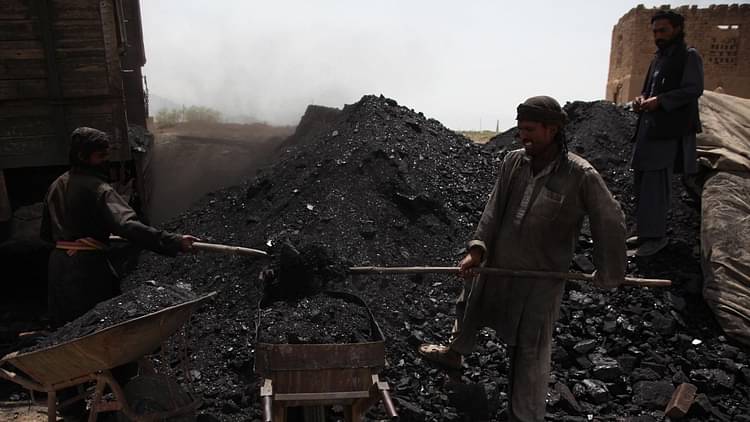India is currently operating on less than eight days of coal stock, with a few power plants operating at just two days stock. This power supply crisis stemming from the coal supply shortage was a long time in the making – in fact from 2016 onwards. These shortages have been fueled by the lack of foresight and poor planning, assert energy commentators.
India’s 135 coal-powered plants have less than eight days of supplies left, of them 108 are staring at critically low stocks, and 28 of them have just one day´s supply, according to data from the Central Electricity Authority of India. The government of India guidelines specify that 14 days stock must be maintained.
This is a management crunch and not a resource crunch. “This is a failure of foresightedness and lack of proper planning by the government. The coal stock at power plants do not deplete over night. Everyone in the government was aware of the depleting stock even before the monsoon,” said Sunil Dahiya, an analyst at the Centre for Research on Energy and Clean Air.
Central Electricity Authority of India maintains daily data on coal stock at power plants.
The depletion of coal stock at power plants which had 45-60 days worth stock in May-June was evident to the govt. “If stock is not being replenished, then it is only logical that the stock would deplete. They could have done this before the monsoon too,” added Dahiya.
Coal India Limited which produced 84 million tonnes (MT) coal in March 2021 is producing only 42 MT currently.
Rajasthan, Jharkhand and Bihar have already begun to see power cuts up to 14 hours and Punjab has been experiencing close to six hours of scheduled power outages regularly. Punjab CM Charanjit Singh Channi asked the Centre to immediately increase the state’s coal supply as per its allotted quota as five power plants in the state have been shut down.
Maharashtra has shut down 13 thermal power plants and the government has urged people to use electricity sparingly. In Tamil Nadu, power was suspended in Chennai for close to six hours.
An acute power supply shortage in Andhra Pradesh has pushed the state towards unscheduled power cuts, adding to fears of crop failure as farmers are unable to irrigate their land without electricity.
In Delhi, there are fears of a looming power crisis with Chief Minister Arvind Kejriwal having written a letter to the Prime Minister.
“I don’t think there will be a complete blackout in the country and the crises can be managed if the government orders ramping up of coal production,” said Anil Swarup, who retired as Secretary in the Ministry of Coal in 2016.
Despite the urgency of the issue, the Power Ministry said in a statement that “fear of disruption in power supply is entirely misplaced. The coal stock at power plant is sufficient for more than 4 days’ requirement" and as the coal supply is being ramped up by CIL (Coal India Ltd).
The Union government was not yet ready to accept that there was a crisis.
What caused the short-term coal supply crisis?
This coal shortage crisis started showing up in August and it was clear that the demand for electricity was going up substantially. “This is surprising because if you look at the production capacity of India, we have enough installed capacity. Today we have enough coal and renewable power plants for our demand. So, it is a fuel shortage,” said Rasika Athawale, an energy industry commentator.
The current crisis may have been triggered by the extended monsoon season and high international coal prices. High international prices have been triggered by increase in demand in both India as well as China, which in a diplomatic stand-off had unofficially banned import of coal from Australia. China, which is reeling under a coal shortage, stated that the country would expand its coal procurement at any price to ensure heating and power generation in the winter. This meant China would temporarily ease the ban.
“India has seen almost four months of monsoon. This is important because most of the mines in our country are open-cast mines and not underground mines,” said Athawale.
However, only the monsoon can’t be blamed for Coal India’s lack of foresight. She pointed out that there was an issue with “Coal India’s projection for how much coal would be required for the year versus how much coal is being generated”. Currently, there’s a mismatch between how much “Coal India is producing and how fast the demand is rising”. Coal India Limited is the largest coal supplier in the country and it meets more than 80% of the power demand. Most of the coal imported is used for other industries.
The current coal issue, underscored Swarup, is much more complex than what it is being made out to be. “The current issue is understandable as there have been unseasonal rains, international prices have skyrocketed, and demand for coal has risen. There are both demand and supply issues. The crisis was in the offing,” said Swarup.
The demand for power started to pick-up before the second Covid-19 wave, but stagnated, so Coal India thought the demand was low though it had almost reached pre-2019 levels. “The government could have foreseen this demand after the second lockdown. It could have asked Coal India to be prepared, but the government delayed the decision until the crisis hit,” added Athawale.
The power plants are to be blamed too. As a result of the Covid-19-triggered shutdown last year, the power plants were running at lower capacity. They did not want to, said Athawale, maintain the required stock.
Coinciding with the beginning of this shortage, Coal India stated that it would not supply coal to those generators who have not paid their dues. This came at a time when the power generators wanted to ramp up their coal stock. Discoms owe more that Rs 50,000 crore to power generating companies, which in turn owe more than Rs 20,000 crore to Coal India.
But the devil is also in the details. “NTPC definitely pays its dues to Coal India, but it has not been getting adequate coal supply in the last few weeks. This means Coal India hasn’t been able to ramp up its production,” observed Athawale.
Dahiya said even now, Coal India hasn’t ramped up production to the required level though it has the capacity to ramp up. Coal India still has about 60MT coal which can be sent to power plants, while the company mines more.
What caused the long-term coal supply crisis?
The real problem lies in the stagnation of production of coal by Coal India. Coal India contributes to 80% of the coal production in India and the rest comes from private and non-Coal India segment. “This coal production in FY18-19 was 606 MT, which reduced to 602 MT in FY 19-20 and went down further to 596 MT in 20-21,” noted Swarup.
In 2014-15, Coal India Limited had recorded close to a seven per cent rise in production at 494 MT. In the next year, production increased by 34 MT, which was more than the cumulative increase of the previous four years. In 2015-16, over this 34 MT, additional 44 MT coal was produced.
In 2014, there was a critical shortage of coal supply to power plants. By 2016, there was not a single power plant facing shortage for want of coal in the country. “We were toying with the idea of exporting coal to Bangladesh. Had the coal production grown at the additional 34 MT, we wouldn’t have faced this crisis as the production which is now 600MT, would have been 700MT. Add another 100 MTs and the problem would have gone. In India, there is never a problem of demand. The government callously stalled production,” observed Swarup.
Swarup retired as the Coal Secretary in 2016 and soon after, in 2017, Coal India CMD Sutirtha Bhattacharya left. Since then, no regular CMD has been appointed for more than a year tenure. Additionally, a number of director level posts at Coal India continue to lie vacant. The momentum that was built in 2014-15 and 2015-16 was lost in 2016-17 and 2017-18 in the absence of decision-making personnel in CIL.
Swarup disclosed that in 2016-17, there was the Swachh Bharat Abhiyan programme because of which mine managers were pushed to build toilets instead of looking after mines. The primary job of mine managers is to plan and excavate mines, but they were not allowed to.
The focus of the company shifted too. Coal India had reserves of about Rs 35,000 crore in 2015-16, while today it has a reserve of about only Rs 10,000 crore. This money should have been used for setting up new mines, but this money was taken away by the government as dividend to manage its own budget.
Then, Coal India was pushed into investing into fertiliser plants. All these combined factors led to stagnation of coal production in Coal India.
“Critical decisions could not be taken and the consequences of which you are seeing today. This crisis has been created and need not have happened,” reiterated Swarup. “A mine, after being identified, takes about five years to start mining. So, had these plants been made in 2016-17 as it should have been, you would have had a number of mines today. This was not done,” added Swarup.
The overall coal demand in the country is 800 MT. India import about 20% of coal because there isn’t sufficient coal produced, so there would have been no question of demand shortage.
Swarup added that when he was the Coal Secretary, all PSUs stopped importing coal because sufficient coal was supplied by Coal India limited. “NTPC was not importing an ounce of coal. We substituted imported coal with coal made in the country,” he said.
The genesis of the problem, the former Coal Secretary insisted, lies in 2014 when 200-odd coal blocks were cancelled by the Supreme Court on the basis of a report by the then Comptroller and Auditor General of India Vinod Rai. Many of the coal blocks were producing about 90MT coal, which constituted about 15-20% of coal production. There were hardly any takers for the nine blocks which were put on auction during the fourth round of auction during 2016 and there are close to 120 blocks left. “He devastated the sector,” added Swarup.
What can be done?
Coal production doesn’t increase overnight – it requires effort to engage with state governments, ministries and effective communication. Nothing of the sort has happened in the last four years, said an insider who did not want to be named.
This was pointed out by Swarup too. “Currently, the Union government thinks it is the boss, and that doesn’t ensure friendly terms from states. Most of the coal-bearing states in the country are governed by Opposition parties – West Bengal, Odisha, Chhattisgarh, Jharkhand and Maharashtra. The problem is that the government is at war with these states, so then issues cannot be solved,” added Swarup.
The crisis can be resolved by what was done in 2014. Coal shortage is normally considered in averages, but there will be surplus coal lying in a few coal beds and in other places there will be a shortage. So, the government has to move the surplus coal from those places to where there is a shortfall. “This can be done immediately by tying up with Railway Ministry,” said Swarup.
The private sector mines always have surplus coal reserves. “Surplus coal lying in these mines needs to be diverted to shortage areas. They should not be allowed to sell in the open market, but this coal should be subsequently replaced by Coal India. If you allow them to sell, they will do so at a higher price," he said.
Was this crisis created?
Only the government knows what it is thinking, said a commentator who did not want to be identified. “If this crisis is used to talk about more commercial and private mining, then we know it was purposely created. Coal India and the current captive private mines have more than enough capacity to provide us for our power consumption for several years,” the commentator remarked.
































